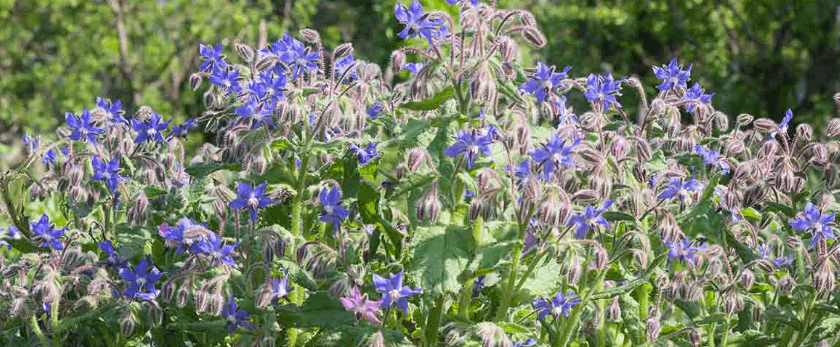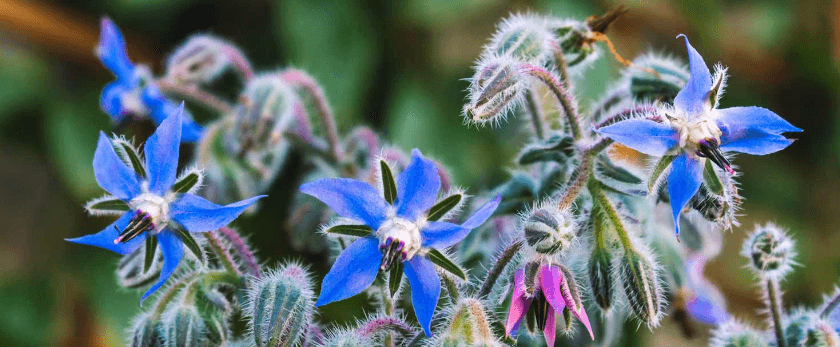Borage, also known as starflower, is a beautiful and versatile plant that can be grown in gardens, containers, and even as a companion plant for other crops. Not only is it aesthetically pleasing with its vibrant blue flowers, but it also has many practical uses. Borage is edible and has a cucumber-like flavor, making it a great addition to salads and drinks. It also attracts pollinators and beneficial insects to your garden, making it a valuable plant for any eco-friendly gardener. In this article, we will discuss how to grow borage successfully, including care tips, the best time to grow, and common problems you may encounter.
Care for Borage
Watering
Borage is a drought-tolerant plant, meaning it can survive with minimal watering. However, for optimal growth and flower production, it is best to keep the soil consistently moist. Water your borage plants deeply once a week, making sure the water reaches the roots. Avoid overhead watering, as this can lead to fungal diseases. Instead, water at the base of the plant.
Light
Borage thrives in full sun, but it can also tolerate partial shade. If you live in a hot climate, it is best to provide some afternoon shade to prevent the plant from wilting. In cooler climates, borage may benefit from full sun to encourage more vigorous growth.
Soil
Borage prefers well-draining soil with a pH level between 6.0 and 7.0. It can grow in a wide range of soil types, from sandy to clay, as long as it is well-draining. If your soil is heavy and tends to retain water, consider adding some organic matter, such as compost, to improve drainage.
Fertilizer
Borage is a low-maintenance plant and does not require much fertilizer. However, if you want to give your plants a boost, you can apply a balanced fertilizer, such as a 10-10-10, once a month during the growing season. Be careful not to over-fertilize, as this can lead to excessive foliage growth and fewer flowers.
Pruning
Pruning borage is not necessary, but it can help promote bushier growth and more flowers. You can pinch off the tips of the plant when it reaches about 6 inches in height. This will encourage the plant to branch out and produce more flowers. You can also deadhead spent flowers to prolong the blooming period.
Best Time to Grow Borage
Borage is an annual plant, meaning it completes its life cycle in one growing season. It is best to sow borage seeds directly in the garden after the last frost date in your area. Borage is a cold-hardy plant and can tolerate light frosts, so you can also sow seeds in early spring. In warmer climates, you can sow borage seeds in the fall for a winter crop.

Common Problems with Borage
Borage is a relatively trouble-free plant, but there are a few common problems you may encounter.
Powdery Mildew
Powdery mildew is a fungal disease that can affect borage plants, especially in humid conditions. It appears as a white powdery coating on the leaves, stems, and flowers. To prevent powdery mildew, make sure to provide good air circulation around your plants and avoid overhead watering. If your plants do get infected, you can treat them with a fungicide or a homemade solution of water and baking soda.
Aphids
Aphids are small, soft-bodied insects that can suck the sap from borage plants, causing stunted growth and distorted leaves. You can control aphids by spraying your plants with a strong jet of water or using insecticidal soap. Ladybugs and lacewings are natural predators of aphids and can help keep their population in check.
Slugs and Snails
Slugs and snails are common pests that can feed on borage leaves, leaving behind large holes. To prevent these pests, you can handpick them off your plants or use organic slug and snail baits. You can also create a barrier around your plants using crushed eggshells or diatomaceous earth.
Conclusion
Borage is a beautiful and beneficial plant that is easy to grow and care for. By following the tips in this article, you can successfully grow borage in your garden or containers. Remember to water your plants regularly, provide adequate sunlight, and keep an eye out for common problems. With a little bit of effort, you can enjoy the vibrant blue flowers and delicious cucumber-like flavor of borage in your garden. Happy growing!










